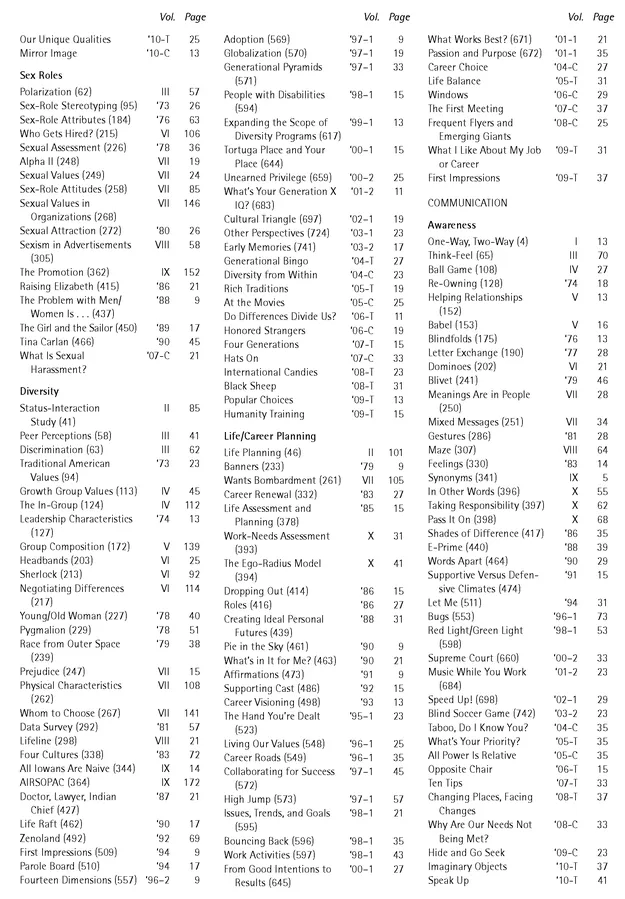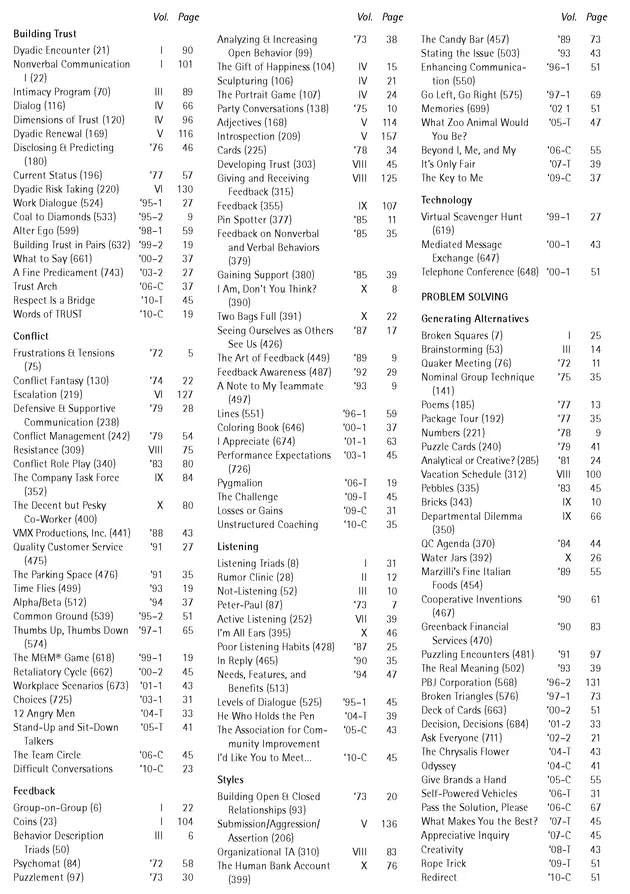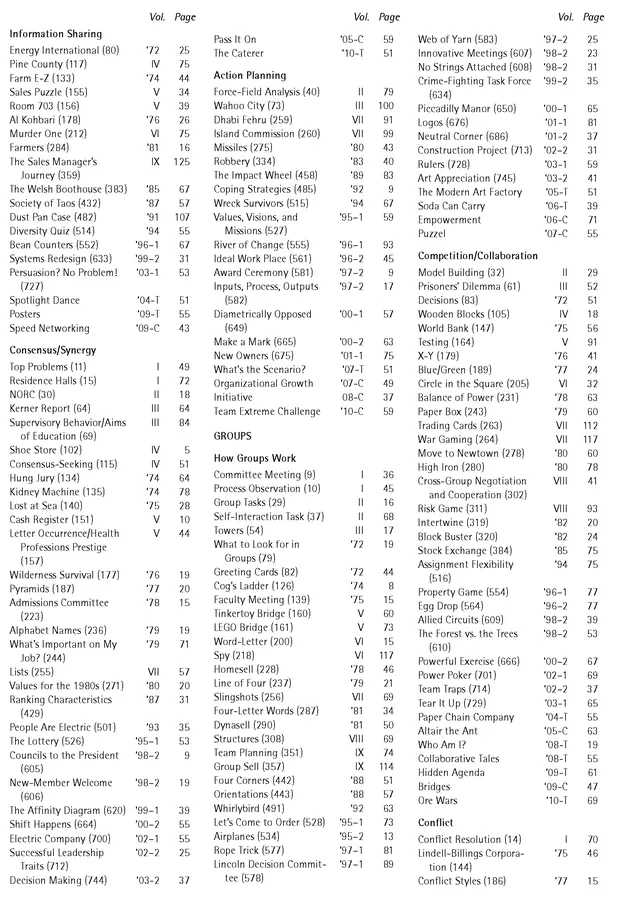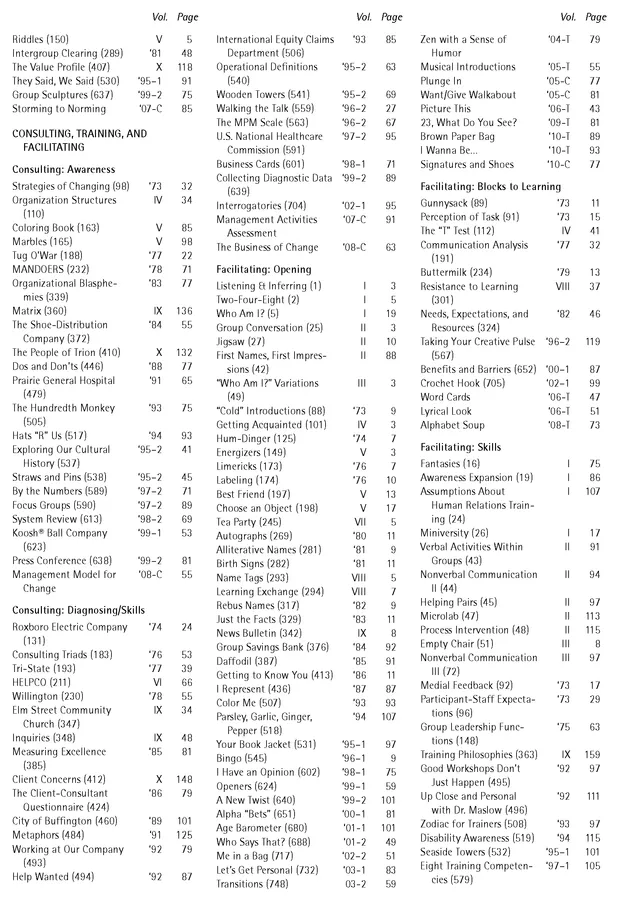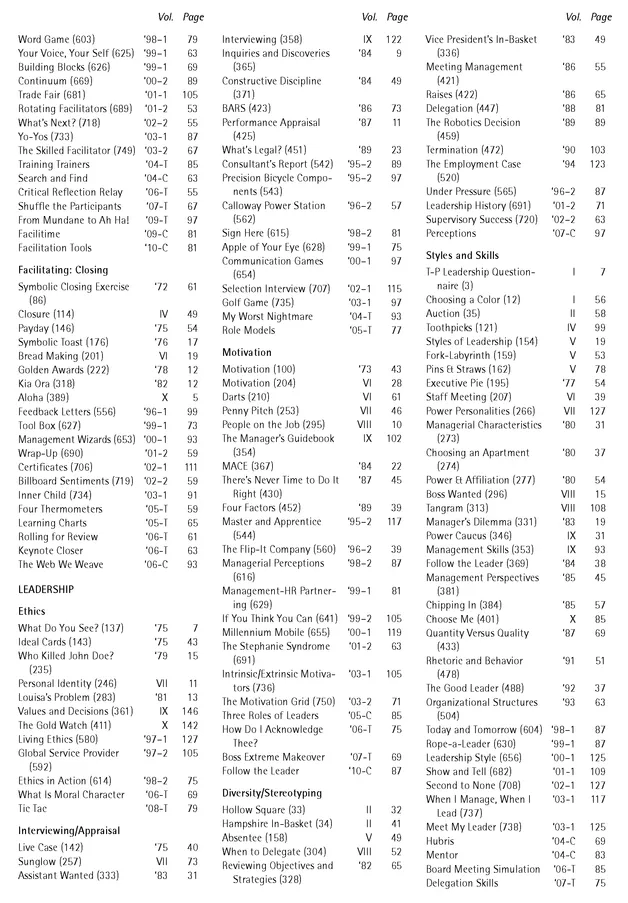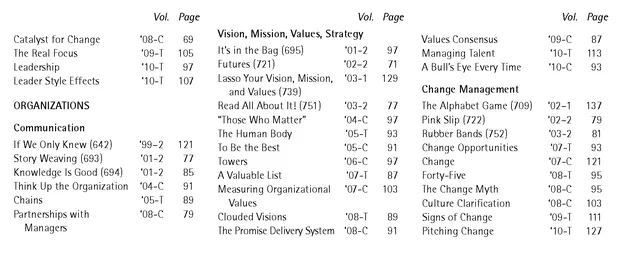![]()
Experiential Learning Activities Categories
![]()
Mirror Image
Reflecting on How Our Personal Pursuits Show in Our Professional Practice
Activity Summary
Examines how our hobbies, activities, interests, or sports can serve as metaphors of who we are in our professional practice.
Goals
• To surface previously hidden assumptions about participants ’ professional practice.
• To examine, challenge, and change those assumptions.
• To inform self-awareness.
Group Size
Any size group.
Time Required
60 minutes.
Materials
• One Mirror Image Worksheet for each participant.
• Pencils or pens for participants.
Physical Setting
A room large enough for groups to work without disturbing one another. Writing surfaces and moveable chairs should be provided.
Facilitating Risk Rating
Moderate.
Process
1. Introduce the session by explaining that participants will be exploring the notion that their favorite personal pursuits may serve as “mirrors” to reflect deeper assumptions they hold about their professional practices. Say that choice of personal pursuits can serve to illuminate tacit assumptions about who we are in our professional practices.
2. Give each participant a writing utensil and a copy of the Mirror Image Worksheet. Ask them to reflect on and write responses, in whatever form feels appropriate to them, to the open-ended questions on the worksheet. Encourage participants to be creative and add their own questions or categories for later discussion.
3. Allow approximately 10 minutes for completing the worksheet, giving a 2-minute warning before calling time.
(10 minutes.)
4. Ask the participants to form small groups of three to share their responses with one another. Encourage them to use answers to the questions only as a guide to inform their stories. Ask listeners to utilize active listening skills in probing for clarity and meaning and for providing support. All participants should take turns as storytellers and listeners.
(20 minutes.)
5. After they have had time to rotate through all the stories, ask participants to discuss the common themes, assumptions, and insights that emerged. Also ask them to discuss differences among the various stories.
(10 minutes.)
6. After the small group dialogue, debrief the entire session. First, ask a representative from each group to report common themes, assumptions, and insights. Ask about differences among stories. Finally, ask the entire group the following questions:
• What did you observe and hear in your session that was meaningful?
• What did you feel during the session, either when you were presenting or when others were presenting?
• What insights have you gained about yourself or others through this activity?
• How has this experience changed the way you think about your professional practice?
• How will you use this new information in your professional practice? (20 minutes.)
Variations
• Change the questions to reflect the particular workshop topic or professions represented.
• Assign the questions as pre-work for the workshop.
• Have participants design their own questions.
Resources
Brookfield, S. (1995). Becoming a critically reflective teacher. San Francisco: Jossey-Bass. Johns, C. (1994). Guided reflection. In A. Palmer, A. Burns, & C. Bulman (Eds.), Reflective practice in nursing: The growth of the professional practitioner (pp. 110-130). Cornwall, UK: Blackwell Science Ltd.
Morgan, G. (1986). Images of organizations. Beverly Hills, CA: Sage.
Ortony, A. (1975). Why metaphors are necessary and not just nice. Educational Theory, 25, 45-53.
Palmer, P.J. (1998). The courage to teach: Exploring the inner landscape of a teacher’s life. San Francisco: Jossey-Bass.
Schön, D.A. (1987). Educating the reflective practitioner. San Francisco: Jossey-Bass.
Spencer, L. (1989). Winning through participation: Meeting the challenge of corporate change and technology of participation. Dubuque, IA: Kendall/Hunt.
Submitted by Gary Wagenheim, Robert Clark, and Alexander Crispo.
Gary Wagenheim, Ph.D., is an adjunct professor at Simon Fraser University and the Helsinki School of Economics. He teaches graduate courses in leadership and organizational behavior. He is a member of the
Learning Strategies Group, which specializes in providing customized education programs for organizations, and an external faculty member for McKinsey & Company. In addition, he owns and operates Wagenheim Advisory Group, which provides corporate training, coaching, and organization development programs.
Robert Clark, Ed.D., is an associate professor of educational administration at California State University - Dominguez Hills. He teaches graduate courses on educational leadership, with an emphasis in instructional leadership and servant leadership. He is a retired school superintendent and currently provides leadership coaching for several public school principals in southern California. Dr. Clark earned his doctorate at the University of Southern California. He is a member of several professional organizations.
Alexander Crispo is an associate professor in the Organizational Leadership Department in the College of Technology at Purdue University. He teaches graduate and undergraduate courses in leadership and change management. He earned his bachelor of science degree in industrial distribution and his master of science in industrial management from Clarkson University. He is past -president of the International Society for the Exploration of Teaching and Learning and a member of the Organizational Behavior Teaching Society.
![]()
Mirror Image Worksheet
What is your favorite personal pursuit, for example, hobby, activity, interest, or sport?
What attracted you to this pursuit in the first place?
How did you learn the skills of this pursuit?
What assumptions do you hold about the skills, values, and actions associated with this pursuit?
How are assumptions in your personal pursuit like assumptions in your professional practice? In other words, how do assumptions you hold about skills, values, and actions in your personal pursuit manifest in assumptions you hold about skills, values, and actions in your professional practice?
What assumptions should you challenge, confirm, disconfirm, or change in your professional practice? How would you test these assumptions?
![]()
Words of Trust
Building Trust in the Workplace
Activity Summary
A critical thinking activity that allows participants to explore the concept of building trust in the workplace.
Goals
• To recognize different meanings that participants ascribe to trust.
• To explore the complexities and subtleties of building and maintaining trust.
Group Size
An unlimited number of groups of four or five.
Time Required
Approximately 2 hours.
Materials
• Blank paper for each participant.
• Flip-chart paper and felt-tipped markers for each small group.
• A pen or pencil for each participant.
• A way to keep time accurately.
• Masking tape.
Physical Setting
A room large enough for the groups to work without disturbing one another and enough wall space to post completed flip-chart pages.
Facilitating Risk Rating
Moderate.
Process
1. Explain to the participants that the activity is a chance to explore and experience what it takes to create a trusting relationship among co-workers.
2. Divide the participants into groups of four to five by traditional numbering of participants or by asking participants to form groups with those next to them. Give each group a flip chart and markers and every participant blank paper and a pen or pencil.
3. Say that the activity has five rounds plus a debriefing session and that you will enforce a strict time limit for each round.
4. Tell the groups that Round 1 will be 4 minutes long. Explain that, during Round 1, each person will
independently create a list of all the words that describe what trust means to him or her personally. (You can choose to let people use trust to encompass all of life or to encompass the workplace only.) Start Round 1.
(10 minutes.)
5. At the end of 4 minutes, call time and ask participants to share their lists within their groups and to create two new lists and record them on a flip-chart page. List 1 should have five words everyone agrees with, and List 2 should have five words that there was disagreement about. Say that they will have 15 minutes for Round 2. Start the round.
(15 minutes.)
6. At the end of 15 minutes, call time and ask each group to trade their flip-chart sheet with the two lists on it with another group. (If there are only two groups, have them exchange papers.)
7. Tell the participants that Round 3 will be 15 minutes long and the task this time is to create one picture that illustrates each list of words on the flip-chart page they received. Clarify that each group needs to create
two pictures—one for each list. Start Round 3.
(20 minutes.)
8. At the end of 15 minutes, call time. Tell groups to trade their flip-chart pages with the two lists and two pictures with another group.
9. State that Round 4 will also last 15 minutes. The task this time is for each group to create a realistic, practical, and action-oriented tip that describes how to build, maintain, or enhance trust in the workplace. Say that the tip should integrate both lists of words and the pict...


